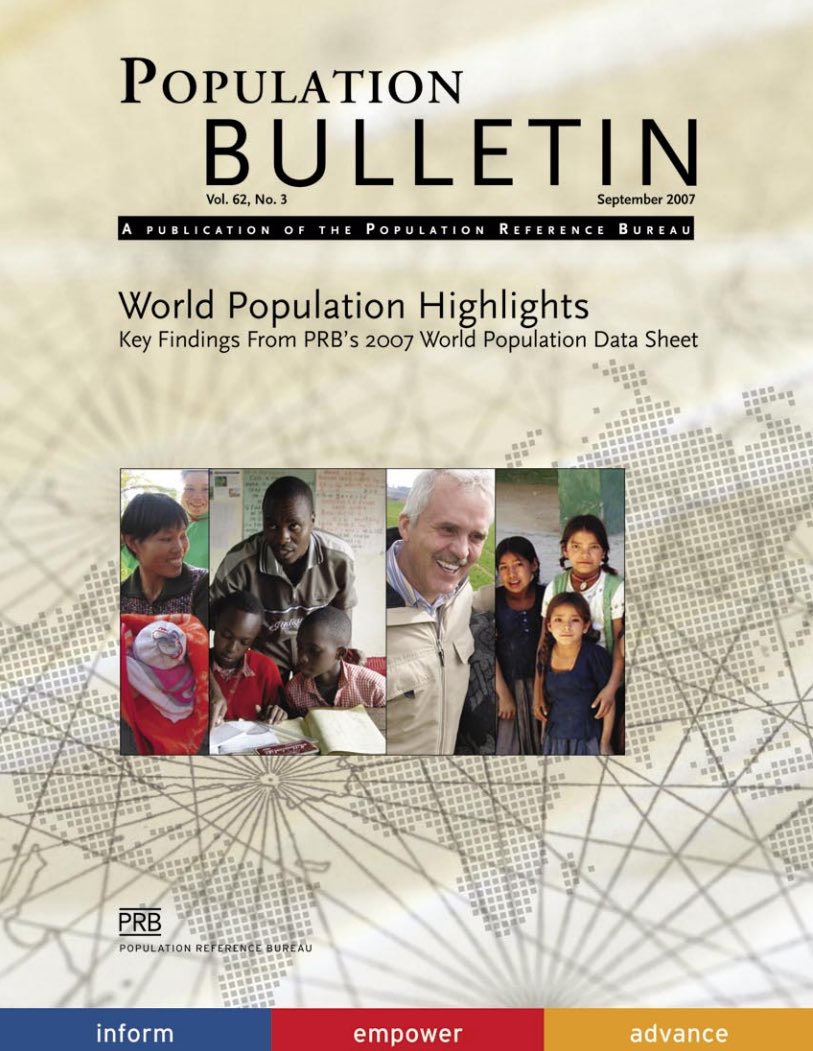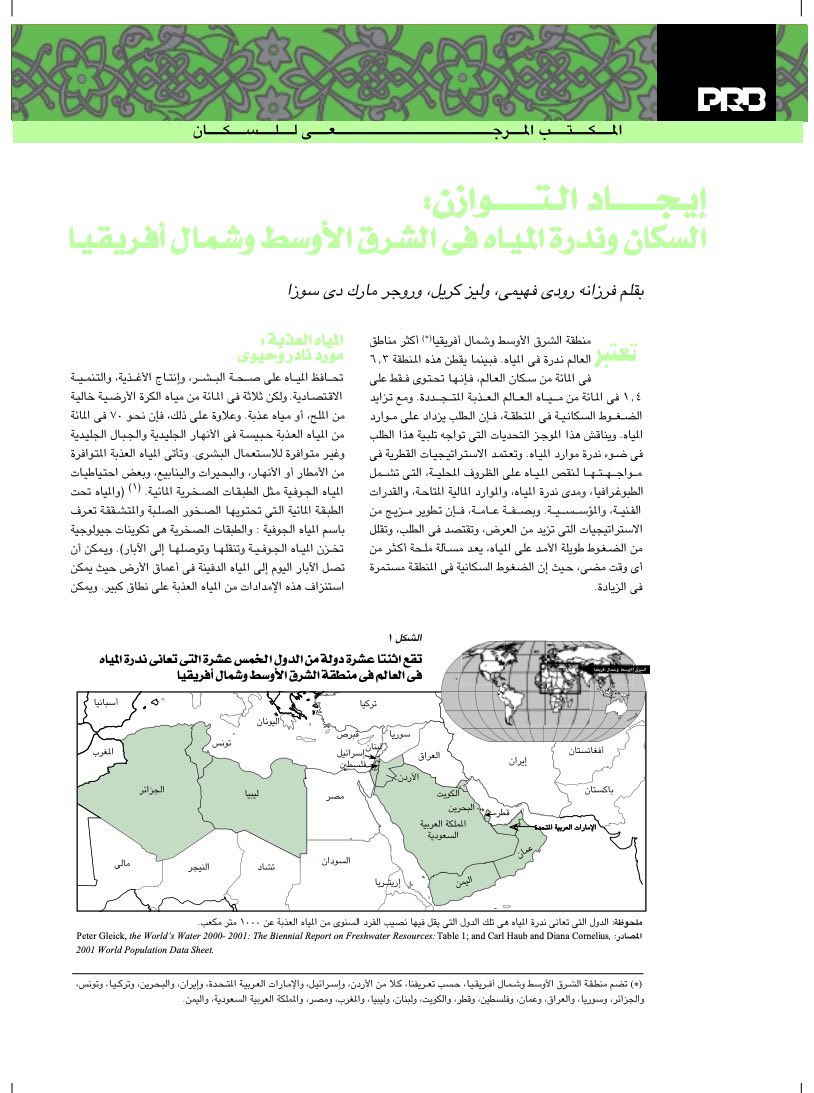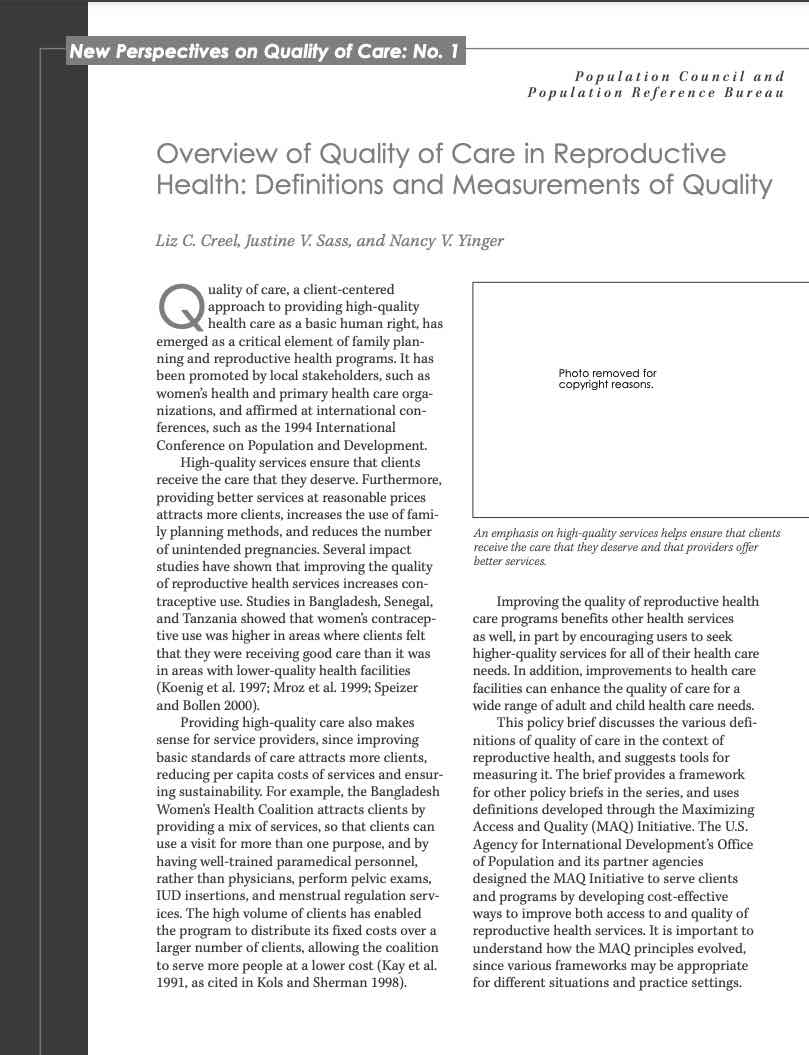World Population Highlights 2007: Migration
2007) In 2005, about 191 million people—3 percent of the world's population—were international migrants, according to UN estimates.

2007) In 2005, about 191 million people—3 percent of the world's population—were international migrants, according to UN estimates.

Census questions about race and ethnicity have evolved over time, as have Americans’ views about racial and ethnic identification.
(2010) Over the past several decades, the U.S. Census Bureau has used variations in its attempt to classify and enumerate Latinos.
(2009) While the main function of the U.S. decennial census is to provide counts of people for the purpose of Congressional apportionment, the primary purpose of the ACS is to measure the changing social and economic characteristics of the U.S. population.

The global population milestone of 8 billion represents nearly 7% of the total number of people who have ever lived on Earth.
(2004) As the 2000 election made clear, the presidential election actually is a series of 51 “winner take all” contests in each state and the District and Columbia. The candidate who wins a particular state is entitled to all of that state’s electoral votes—the equivalent of that state’s total number of senators and representatives.

(2002) The Middle East and North Africa (MENA)* is the most water-scarce region of the world. Home to 6.3 percent of the world's population, the region contains only 1.4 percent of the world's renewable fresh water.

(2002) Quality of care, a client-centered approach to providing high-quality health care as a basic human right, has emerged as a critical element of family planning and reproductive health programs.

Project: PACE: Policy, Advocacy, and Communication Enhanced for Population and Reproductive Health
Le Sénégal s’Engage: la Religion et la Santé familiale (Senegal Engage: Religion and Family Health) is a new ENGAGE presentation that serves as an advocacy tool to connect reproductive health and family planning issues with faith-based attitudes and beliefs.